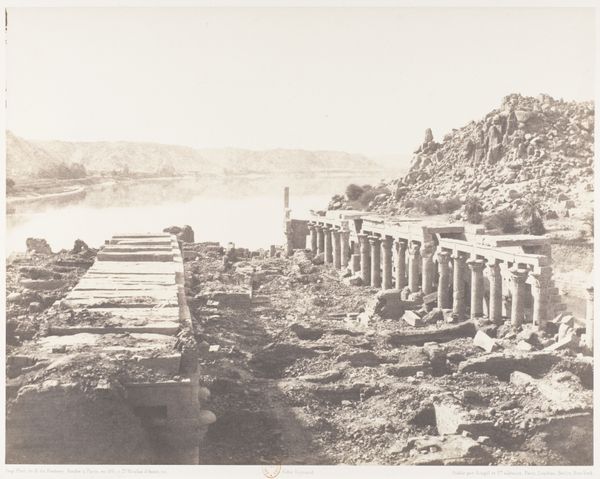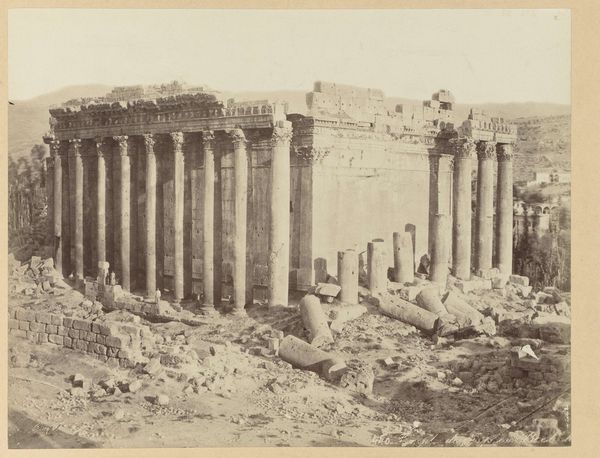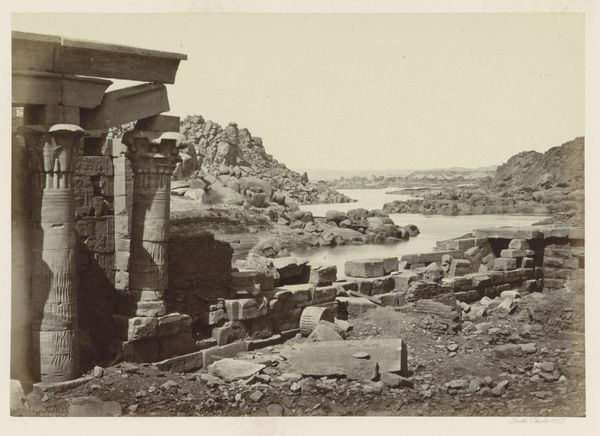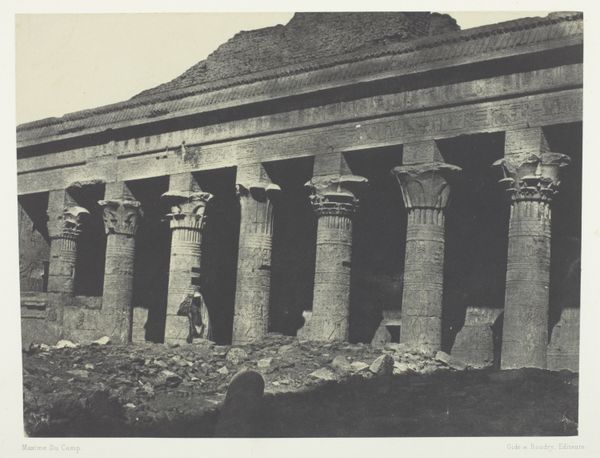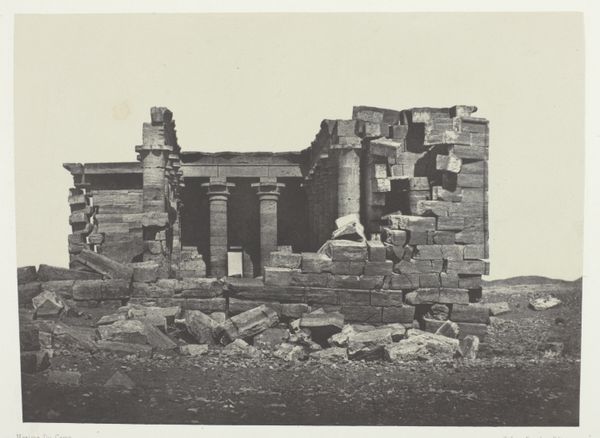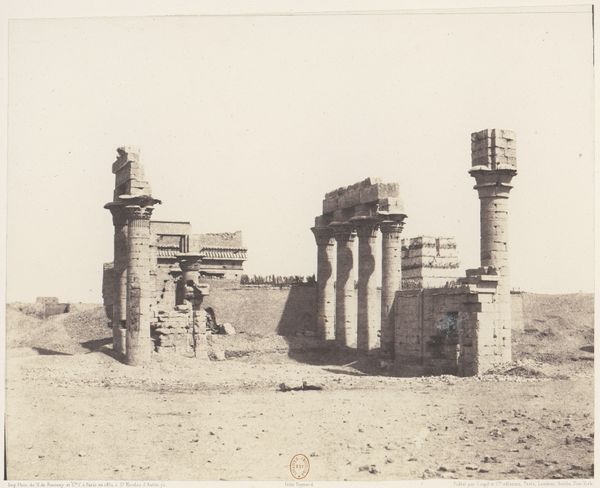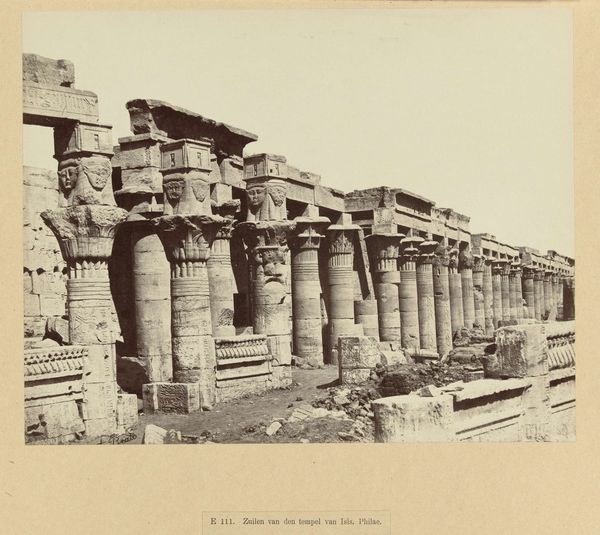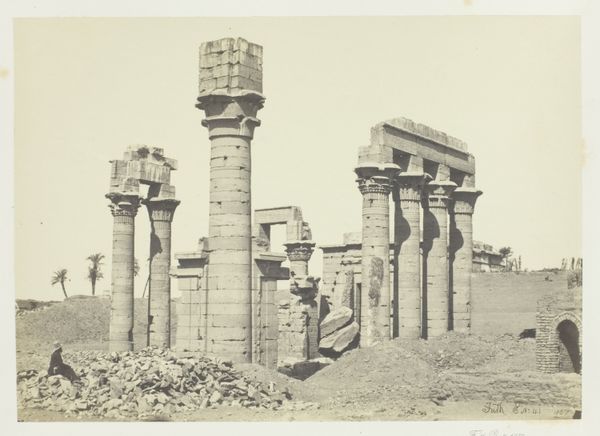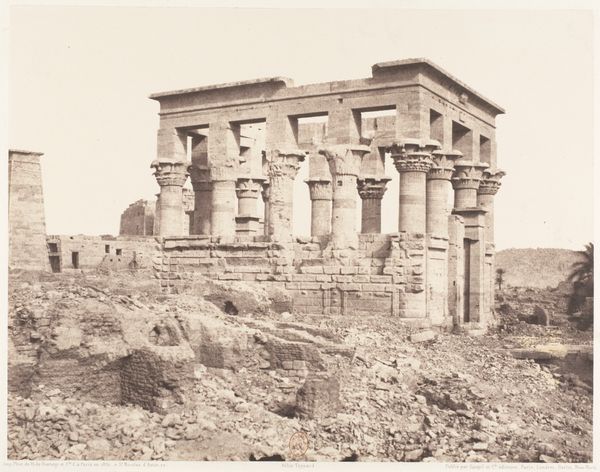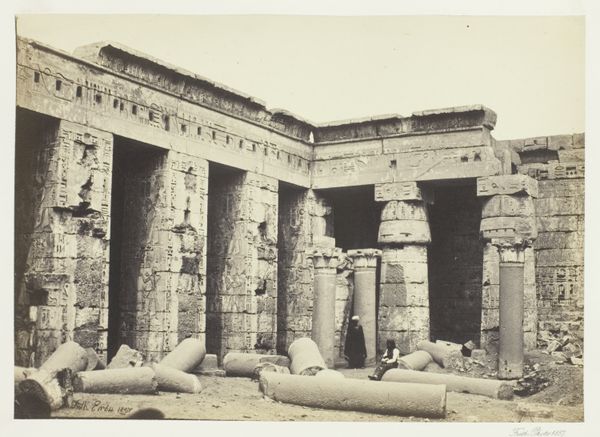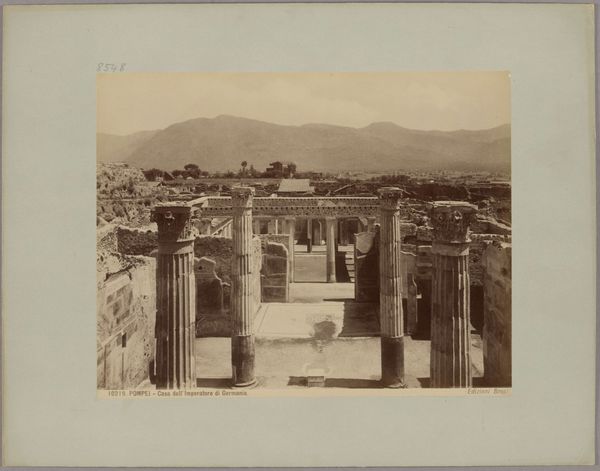
Zuilengalerij van de tempel van Isis op het eiland Philae 1862 - 1895
0:00
0:00
photography, albumen-print, architecture
#
landscape
#
ancient-egyptian-art
#
photography
#
ancient-mediterranean
#
column
#
albumen-print
#
architecture
Dimensions: height 199 mm, width 257 mm, height 469 mm, width 558 mm
Copyright: Rijks Museum: Open Domain
Editor: This albumen print, "Zuilengalerij van de tempel van Isis op het eiland Philae," was captured by Antonio Beato sometime between 1862 and 1895. The repetition of the columns gives a nice rhythm, but there’s also something melancholy about it. What do you see in this piece? Curator: I see the layers of power and representation. Beato's photograph isn't simply a neutral depiction. It's an encounter between Western photography and Egyptian heritage, steeped in colonial history. It speaks of the West's fascination with, and simultaneous appropriation of, ancient cultures. Do you notice the stark contrast between the ordered columns and the rugged landscape? Editor: Yes, the geometry of the columns contrasting the organic forms of the rocks is striking. Curator: It's a composition that highlights not only the grandeur of ancient Egyptian architecture, but also a narrative of dominance. Western eyes, aided by the relatively new technology of photography, "capture" and catalogue what was perceived as the treasures of a 'bygone' civilization. Consider the context: how did photography serve colonial ambitions? Editor: I guess it made it easier to document and, in a way, possess other cultures. It becomes an object. Curator: Exactly. And within this image, we can also ask: who had access to this technology, who controlled the narrative, and whose stories were erased or amplified in the process? Editor: That’s a different way of viewing the image, I hadn’t considered it like that. Curator: These images become powerful tools. This challenges us to unpack not just the beauty, but also the complicated social, political and ethical layers within this historical photograph. Editor: It's like the photo becomes more than a landscape. It's a historical and social document to be carefully examined. Curator: Precisely. It requires us to ask critical questions about its creation and its legacy.
Comments
No comments
Be the first to comment and join the conversation on the ultimate creative platform.
